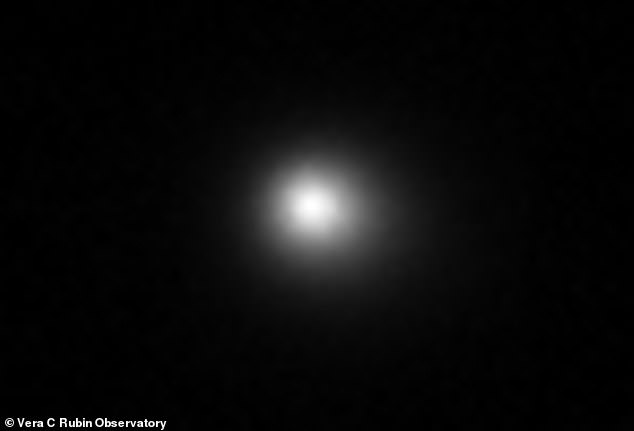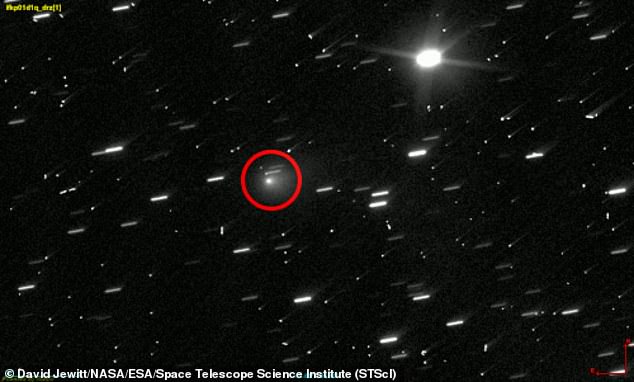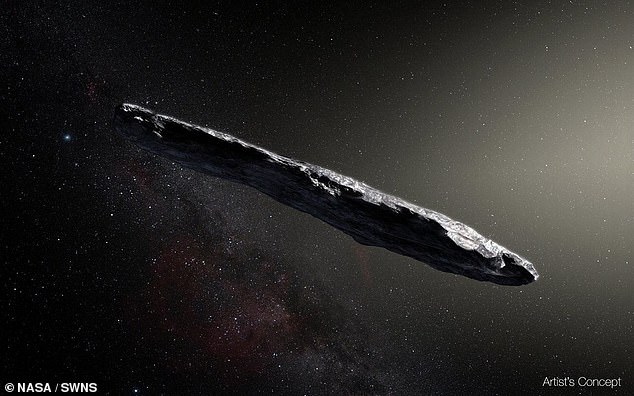It was first discovered on July 1, sparking fears of an alien invasion.
Now, scientists have provided a chilling update on the mysterious ‘interstellar object’ racing through our solar system.
Using data from the Vera C Rubin Observatory, experts have revealed just how big the object, dubbed 3I/ATLAS, really is.
According to their analysis, the object measures roughly seven miles (11.2km) in diameter.
That’s even bigger than Mount Everest – making 3I/ATLAS the largest interstellar object ever spotted.
Professor Avi Loeb, a theoretical physicist and cosmologist from Harvard University, has suggested that the object could be an alien spacecraft.
However, not everyone is so convinced.
Chris Lintott, an astronomer at the University of Oxford, told Live Science: ‘Any suggestion that it’s artificial is nonsense on stilts, and is an insult to the exciting work going on to understand this object.’

It was first discovered on July 1, sparking fears of an alien invasion. Now, scientists have provided a chilling update on the mysterious ‘interstellar object’ racing through our solar system

According to their analysis, the object measures roughly seven miles (11.2km) in diameter
The images of the comet were actually snapped by Vera C Rubin before it was officially discovered.
However, since it was identified on July 1, scientists have scoured back through the data to find out more about the mysterious object.
In a new study, published on arXiv, more than 200 researchers have confirmed the likely size of the comet’s main body, known as its nucleus.
Their analysis suggests that the nucleus has a radius of around 3.5 miles (5.6km).
That translates to a diameter – or width – of about seven miles (11.2km).
To put that into perspective, that’s even bigger than Mount Everest (5.4 miles), and almost twice the size of Mount Kilimanjaro (3.6 miles)!
That makes 3I/ATLAS the largest of the three confirmed interstellar objects discovered to date.
For comparison, ‘Oumuamua, which was discovered in 2017, was believed to be around 0.2 miles (0.4km) wide, while Comet Borisov, discovered in 2019, was roughly 0.6 miles (1km) wide.

Their analysis suggests that the nucleus has a radius of around 3.5 miles (5.6km). That translates to a diameter – or width – of about seven miles (11.2km). To put that into perspective, that’s even bigger than Mount Everest (pictured)

For comparison, ‘Oumuamua (artist’s concept, pictured), which was discovered in 2017, was believed to be around 0.2 miles (0.4km) wide, while Comet Borisov, discovered in 2019, was roughly 0.6 miles (1km) wide
Beyond size, the researchers were also able to ascertain details on 3I/ATLAS’s coma – the cloud of ice, dust and gas surrounding it.
Based on the images, the researchers predict that the comet has large amounts of dust and ice in the coma.
For alien hunters, this will likely come as disappointing news.
This composition suggests that 3I/ATLAS is likely a natural comet, and not an alien probe.
Previously speaking to MailOnline, Professor Loeb pointed to 3I/ATLAS’s impressive speed of 130,000mph as an indication that it might be controlled by aliens.
‘It is difficult to imagine a natural process that would favour a plunge towards the inner solar system at 60 kilometres per second,’ he said.
‘An alternative is that the object targets the inner solar system by some technological design.’
